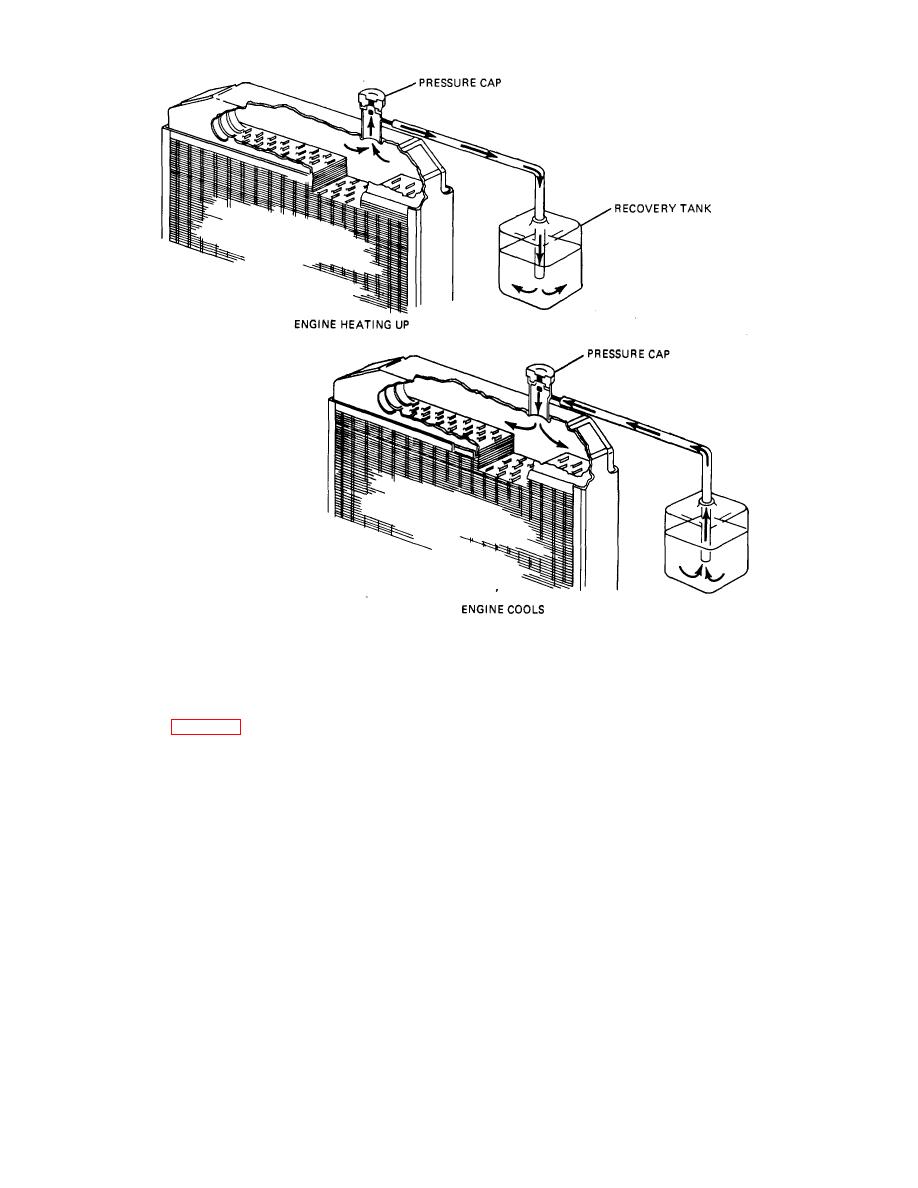
| Tweet |

Custom Search
|
|

|
||
 Figure 9-12. Closed Cooling System
Section III AIR COOLING SYSTEMS
c. An air cooling system, like a liquid cooling system,
9-13. Principles (Fig. 9-13).
must be controlled to prevent overcooling of the engine.
To accomplish this, a system of thermostatically
a. An air-cooled engine
uses air as the principal
controlled doors are usually incorporated into the
cooling medium. Air-cooled
engines are very easily
ducting. The thermostat is usually a bellows that is filled
identified by separate finned
cylinders, finned cylinder
with butyl alcohol. As the thermostat heats up, it opens
heads, and in most cases,
large cooling fans and
the temperature control doors through linkage. When
extensive duct work.
the doors are open, all of the cooling air is diverted
through the engine cooling fins. When the doors are
b. The primary means of removing heat from an air-
closed, all cooling air bypasses the engine and no
cooled engine is by dissipation to the air. The duct work
cooling takes place. To maintain uniform engine
and the cooling fans cause a constant flow of air over
TA233501
and around the cylinders and cylinder heads. The finned
design of these components add a tremendous amount
of surface area to them so that they are able to dissipate
an adequate amount of heat.
9-11
TM 9-8000
|
||
 |
||